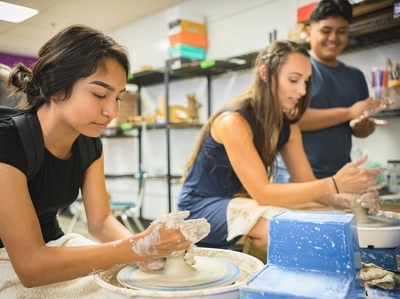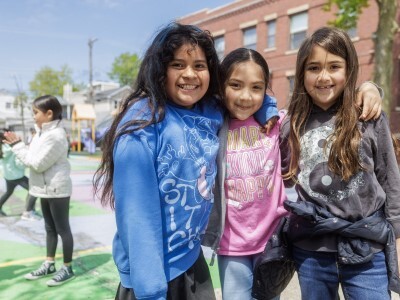Teachers of the Year: Ms. Rona & Mr. Floyd
Topics

Today’s learners face an uncertain present and a rapidly changing future that demand far different skills and knowledge than were needed in the 20th century. We also know so much more about enabling deep, powerful learning than we ever did before. Our collective future depends on how well young people prepare for the challenges and opportunities of 21st-century life.
The disruption from COVID-19 and the killing of George Floyd have schooled the education sector in a big way, demanding that we put in real time on these three lessons.
I’ve had tough teachers in school. I complained about their demands, the homework, the deadlines like many students do. But they were nothing compared to Ms. Rona (Corona Virus) and Mr. Floyd (George Floyd); they have schooled the education sector in a big way. Here’s my exit ticket for the last eight months.
- The culture war, fueled by the Trump presidency, and the racial reckoning set in motion by the searing summer of high-profile police brutality/fatalities has put families and children of color on high-alert. They are not going to tolerate additional risks or trauma coming from a school. Schools that denigrate your child’s culture or place your child at physical risk from gun violence or violence from security guards are optional now. And if you think Black kids and families are going to line up to come back when Ms. Rona is done, think again. Schools have to prioritize student safety in ALL dimensions and confront the systemic, anti-Black racism that is traumatizing their students in the building if they want to keep student enrollment. That means using the Harvard Implicit Bias test with teachers, to guide them into seeing, confronting, and eliminating their bias toward their own students. That means committing to in-class observations (online or in-person) where teachers delivering microaggressions are stopped and redirected. That means auditing your curriculum to root out the content with anti-Black and other biases and replacing it with curriculum that shows every child she has a place in your school.
- We need relevant content, right now. The only learning happening that I can see is that which is engaging and/or relevant for students. They’re just not gonna eat dog food anymore and be okay with that. They can turn that device off and end the boring stream of content that means nothing to them, does nothing for them (that they can see right now), and looks nothing like them. And they are doing just that. Turning it off. If we want kids to learn, we need to meet them where they are and engage them with what they love. For example, you can learn a lot about the meters of poetry by studying hip hop music; check out Words Liive, an upstart edtech using music to teach literacy and writing.
The best learning I’ve seen happening is from parent to child about things happening right now. One particularly frustrating day, my friend just turned off her son’s computer and they filled out her ballot together, during which she gave him a civics lesson. She covered all of his questions. How do you know who to believe? How do you judge the quality of information sources? What does a ‘yes’ vote mean on this referendum; are you saying you want it, or you don’t want it? He couldn’t tell because of the tricky way it was worded. They spent several hours doing it, but now that child is on his way to becoming a competent voter. Is there any more important lesson to learn in a democracy? - User-centered design isn’t optional; it’s critical. As I helped conduct stakeholder listening sessions with ELL teachers and students for Global Voice this summer, we heard again and again from teachers that lots of kids are more or less quitting school because of the UI (User Interface) friction to find a class, get on, find the homework, and then figure out how to turn it in. If an adult with patience and three advanced degrees needs 45 minutes to discern the mechanical steps to complete the task of going to class and turning in the homework—apart from actually doing the homework, you know that an unmotivated teenager, with the attention span of a gnat and zero degrees in anything but soccer, is not going to get this right. And this is exponentially harder for students who don’t have available parents at home during the day with the time or willingness to mess around with their kid’s school platform. For a kid with severe anxiety, that click to turn on a camera is a mountain; if she can’t find it and make it work, game over. For kids who don’t speak English and don’t own a laptop, a 10-step process to engage with a class you mostly do not understand on a four-year-old iPhone is expecting the impossible. How many times are you willing to click down, get locked out, lose your password, etc., before you just quit?
Putting students at the center of the experience is the ONLY way to make the experience happen in a meaningful way. The d.school at Stanford’s updated design thinking process which embraces equity and inclusion, liberatory design, is a great tool to start thinking about how to put students at the center of learning.
Like all good teachers, Ms. Rona and Mr. Floyd have high expectations of us, and right now we’re averaging somewhere between a D+ and C-. So we better put in some real time on the lessons or we’ll be taking this class again.
Image at top by "Free-Photos."




